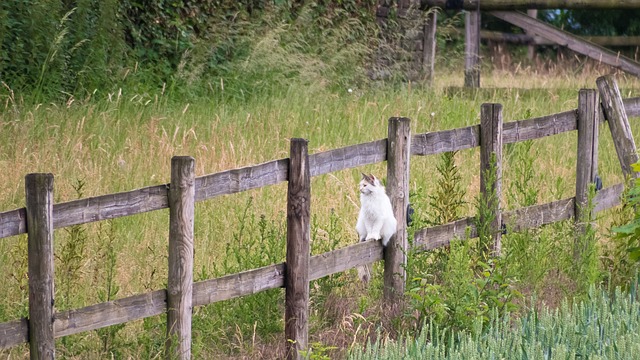In New Bedford, MA, enhancing your property with a vinyl fence offers both aesthetic appeal and practical benefits. This article guides you through the process of installing a vinyl fence, from understanding the local regulations to selecting the perfect contractor. We’ll delve into the advantages of vinyl fences, walk you through the installation steps, and provide essential maintenance tips for longevity. Whether you’re looking for privacy or defining your property lines, this comprehensive resource ensures your New Bedford vinyl fence project is both successful and cost-effective.
- Understanding Vinyl Fence Installation in New Bedford
- Choosing the Right Contractor for Your Project
- The Benefits of Vinyl Fences for Your Property
- Step-by-Step Guide to Installation Process
- Maintaining and Repairing Your Vinyl Fence
Understanding Vinyl Fence Installation in New Bedford
In New Bedford, MA, vinyl fence installation is a popular choice among homeowners and businesses alike due to its durability, low maintenance, and aesthetic appeal. This type of fencing is made from rigid PVC (polyvinyl chloride) that is both weather-resistant and impact-resistant, ensuring it stands the test of time despite exposure to harsh weather conditions and potential damage. The installation process involves careful planning and precise measuring to ensure a secure fit around the designated area.
Contractors specializing in vinyl fence installation in New Bedford typically begin by assessing the site, providing customized quotes, and helping clients choose from a variety of styles, colors, and add-ons. Once a client approves the design and materials, the contractor handles all necessary permits and ensures compliance with local regulations. The actual installation involves posting support brackets at regular intervals, attaching panels to these brackets using specialized fasteners, and sealing all joints for maximum longevity.
Choosing the Right Contractor for Your Project
When hiring a vinyl fence installation contractor in New Bedford, MA, selecting the right professional is paramount. Start by gathering recommendations from friends or neighbors who have recently had similar projects. This can provide valuable insights into local contractors’ quality of work, customer service, and reliability. Check online reviews to get an idea of what other clients experienced and ensure they align with your expectations.
Consider factors like experience, licensing, insurance, and warranty coverage when shortlisting candidates. Experienced contractors are likely to have a portfolio showcasing their work and can offer expert advice tailored to your property’s unique needs. Ensure the contractor is licensed and insured to protect yourself from potential legal issues and financial risks during the installation process.
The Benefits of Vinyl Fences for Your Property
Vinyl fences offer numerous benefits for your property, making them a popular choice among homeowners in New Bedford, MA. One of the most significant advantages is their durability. Unlike traditional materials like wood, vinyl does not rot, warp, or deteriorate over time, ensuring your fence remains strong and structurally sound for years to come. This longevity translates into cost-effectiveness as you won’t need frequent repairs or replacements.
Additionally, vinyl fences are low-maintenance, saving you time and money. They are resistant to rust, fading, and other environmental damages, maintaining their sleek appearance with minimal care. Whether it’s a privacy fence to protect your outdoor space or a boundary marker, vinyl fences provide a long-lasting solution that enhances the overall aesthetic appeal of your property without breaking the bank.
Step-by-Step Guide to Installation Process
The installation process for a vinyl fence begins with measuring and marking the perimeter of your desired fence line, ensuring it aligns with local regulations and property lines. Next, dig post holes at predetermined intervals, typically every 6 to 8 feet, using a post-hole digger or mechanical excavator. The depth of the holes should be deep enough to support the fence’s height plus the length of the posts’ footing.
Once the holes are dug, place concrete in each hole and allow it to set completely. After the concrete has cured, insert the vinyl fence posts into the holes. Make sure the posts are level and aligned properly using a bubble level. Then, attach the rails to the posts, securing them with brackets or screws as per manufacturer instructions. Finally, connect the picket panels to the rails, creating your desired fence design.
Maintaining and Repairing Your Vinyl Fence
Vinyl fences, known for their durability and low-maintenance nature, still require periodic care to ensure they remain in top condition. Regular cleaning with mild soap and water is usually sufficient to remove dirt, stains, or debris that accumulate over time. A soft-bristled brush can help reach hard-to-clean areas. Avoid using harsh chemicals as they might damage the vinyl material.
When it comes to repairs, keeping an eye out for any signs of damage, such as cracks, splits, or broken panels, is essential. Small issues can often be easily fixed with replacement parts or DIY repair kits. For more extensive damage, it’s best to contact a professional contractor. Regular maintenance and prompt repair work will ensure your vinyl fence remains not just functional but also aesthetically pleasing for years to come.
